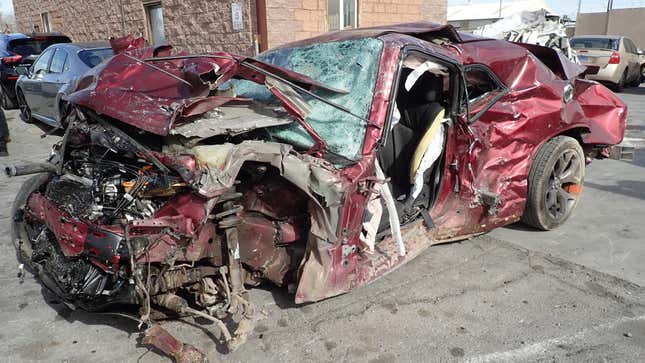
The National Transportation Safety Board is asking automakers to install anti-speeding technology in all new vehicles to cut down on the number of deaths caused by people driving way too fast, according to an NTSB post.
The NTSB has now issued a recommendation to 17 automakers, asking them to install speed-assistance technology on all new vehicles that – at the very least – will warn a driver when a vehicle is speeding.
There are two different types of this tech: active intelligent speed assistance and passive intelligent speed assistance, the NTSB says. Active ISA technology would use a car’s GPS location, a database of posted speed limits and its onboard cameras to make sure drivers are going the speed limit. The system would include a mechanism that would make it “more difficult, but not impossible, to increase the speed of a vehicle above the posted speed limit,” according to the post. Apparently, there is also an option to electronically limit a vehicle’s speed so that it never exceeds the speed limit.
There’s also Passive ISA, which will warn drivers when they are speeding by using visual, sound or haptic alerts. However, unlike Active ISA, the driver is still ultimately responsible for slowing the vehicle down.
Along with ISA tech, the NTSB recommended a number of other changes to the National Highway Traffic Safety Administration:
- Educate the public about the benefits of ISA.
- Update the guidelines for state highway safety programs to include identification and tracking of repeat speeding offenders.
- Develop countermeasures to reduce repeat speeding offenses.
- Conduct research and develop guidelines to assist states in implementing ISA interlock programs for repeat speeding offenders.
- Incentivize the adoption of ISA through, for example, the New Car Assessment Program. This recommendation is reiterated from a 2017 recommendation.
Along with that, the NTSB recommended the 50 states, Puerto Rico and the District of Columbia implement programs meant to identify repeat spending offenders and get them to – you know – stop doing that.
These recommendations come following a car crash in Las Vegas that resulted in nine deaths in January of 2022. The NTSB determined the crash was caused by excessive speeding, drug-impaired driving and Nevada’s failure to hold the driver accountable despite numerous speeding citations.

In late January, a 2019 Dodge Challenger entered an intersection during a red light at 103 mph. It caused a crash with five other vehicles, including a Toyota Sienna minivan. The driver and passenger in the Challenger and all seven occupants of the Sienna died. The NTSB determined the Challenger driver’s use of cocaine and PCP impaired his decision-making, and he also had a history of speeding offenses.
“This crash is the latest in a long line of tragedies we’ve investigated where speeding and impairment led to catastrophe, but it doesn’t have to be this way,” Jennifer Homendy, NTSB Chair, said in a statement. “We know the key to saving lives is redundancy, which can protect all of us from human error that occurs on our roads. What we lack is the collective will to act on NTSB safety recommendations.”
The NTSB says that in 2021 alone, speeding-related crashes resulted in 12,330 fatalities. That comes out to about one-third of all U.S. traffic deaths that year. Last year, we reported that this sort of tech could cut traffic deaths in half, but no one is really into that, which is a damn shame.